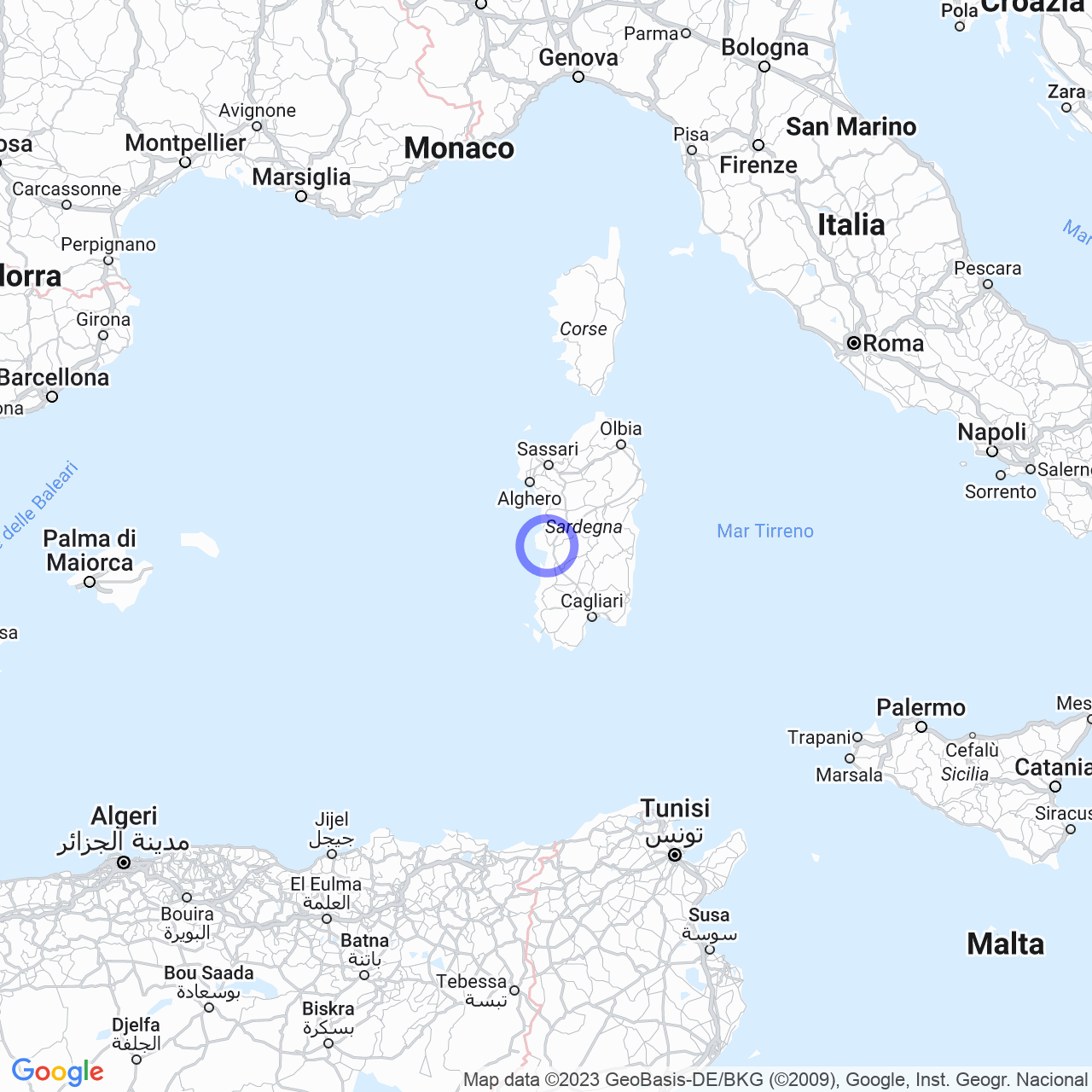Cabras
Welcome to Cabras: a city rich in history, culture and breathtaking landscapes
Cabras, also known as Crabas in Sardinian, is an Italian city located in the province of Oristano, in Sardinia. With a population of about 8,760 inhabitants, it stands on the left bank of the Cabras lagoon, also known as Mari Pontis, one of the largest lakes in Europe. With a history dating back to the Bronze Age, it holds a vast collection of monuments, buildings and archaeological sites of great interest, such as the city of Tharros, the Spanish-Sardinian coastal towers, the castle of Cabras, and the ancient statues of Monte Prama. Equally important are the wonderful beaches of the Sinis peninsula, among which the white sand expanses of Is Arutas, Maimoni and Mari Ermi stand out for their beauty.
Physical geography
Cabras covers an area of about 125 square kilometers and borders the municipalities of Riola Sardo and Nurachi to the north, Oristano to the east, and faces the sea to the west, with a coastal area of about 30 kilometers that includes the Sinis peninsula and the islands of Isola Mal di Ventre and Scoglio del Catalano.

History
The territory of Cabras was inhabited since the Neolithic period, as evidenced by the important village of Cuccuru is Arrius and the numerous nuraghi scattered throughout the area. During the Bronze Age, the territory was densely populated and counted around 75 nuraghi, of which 47 were single-tower and 28 were of a complex type. The imposing statues of Monte Prama date back to this era, discovered by chance in the 1970s.
Towards the 8th century B.C., the Phoenicians founded the city of Tharros, inhabited continuously throughout the Carthaginian and then Roman period. The first settlements in the current center of Cabras date back to the 11th century after the city of Tharros was depopulated due to the raids of North African corsairs. During the Sardinian judge period, Cabras gained importance and the court of the Kingdom of Arborea often resided in the castle. After the fall of the judicate, the village passed under the dominion of numerous feudal lords, through which the inhabitants often sought to liberate themselves from the feudal bond through revolts.
In the first half of the 19th century, the village was included in the province of Oristano as the capital of the district, and then in 1859 it passed to the province of Cagliari. In 1974 it finally became part of the just reconstituted province of Oristano.
Monuments and places of interest
Cabras offers a vast collection of monuments, buildings and archaeological sites of great interest.
Religious architecture
The main church of the city is the Pieve of Santa Maria Vergine Assunta, a baroque construction of the 17th century dedicated to the patron saint. The Churches of San Giovanni di Sinis and San Salvatore di Sinis are two medieval churches located on the Sinis peninsula, while the Church of the Holy Spirit is built next to the birthplace of the poet Grazia Deledda and is also of great historical interest. Finally, the Church of San Pietro Apostolo in the hamlet of Solanas probably dates back to the early 16th century.
Military architecture
Cabras holds an important heritage of Spanish-Sardinian coastal towers, a testimony to the Spanish domination period. The Castle of Cabras, on the other hand, is an imposing quadrangular building dating back to the Sardinian judge period.
Archaeological sites
Cabras hosts numerous archaeological sites of great historical value, including Cuccuru is Arrius, an important Neolithic village, and the ancient statues of Monte Prama, dating back to the Bronze Age and recovered only in the 1970s. No less important is the city of Tharros, inhabited continuously during the Carthaginian and Roman period. The ruins of the city of Tharros are an important tourist attraction that attracts visitors from all over the world.
Places of natural interest
Cabras also offers breathtaking natural landscapes. Particularly interesting are the beaches of the Sinis peninsula, whose beauty is indescribable. Among the most famous beaches are Is Arutas, Maimoni and Mari Ermi, characterized by white sand expanses and crystal-clear sea. This 30-kilometer-long coastline also offers the possibility of practicing various water sports, such as surfing, windsurfing and diving.
In conclusion, Cabras is a city that offers history, culture, nature and relaxation. With its archaeological sites, churches, coastal towers and wonderful beaches, there is not a single reason not to visit it. For those who love history, culture and the beauty of the natural landscape, Cabras is a perfect destination. Come and visit it, you will be fascinated!
